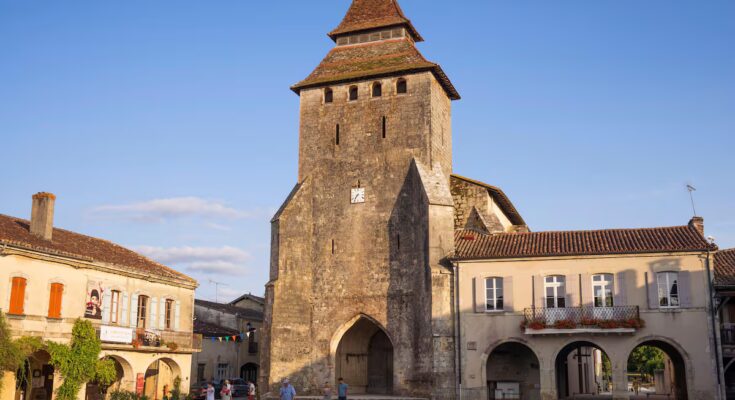During summer retreats from the French coast, visitors’ compass points east. It is towards the interior of the Landes, where the beach and the tourist bustle are followed by the peace of a bucolic landscape of rushing rivers, wheat fields and medieval heritage, all united by a world map of narrow streets that multiply the charm and contemplation during the journey.
35 kilometers from Bayonne, following the course of the Adour river, the first signs of this unaltered life appear. The gateway to this rural universe is Peyrehorade, a town nestled in this countryside full of farms and small houses with shutters. From here, far from the pine ocean that defines southwestern France, winding roads connect each part of a route whose first stop is shrouded in kiwi. Because this has been the direction of this fragment of the Landes since the first plantations were cultivated in the seventies. This fruit has survived attempts to cultivate tamarillo and passion fruit in the Adour.
Over time, Kiwi Valley has transformed its skyline of cattle and wheat fields into intricate structures of fruit around Peyrehorade, the French kiwi capital. Nearly 350 producers harvest 20,000 tons of kiwis which are enjoyed in drinks, desserts, jams or cosmetic products. The itineraries on foot or by bicycle pass through plantations of a fruit native to China trying to familiarize the visitor with activities related to kiwi, from harvesting in places such as Domaine Darmandieu (starting in November) or a stop to recover strength, in the middle of a 26 kilometer route between the Kiwi Valley and Béarn des Gaves, at the Kiwis Délices plantation.
In the Peyrehorade market there are still around a hundred cheese, fruit, vegetable and bread stalls dating back to the 14th century. THE fromas the rivers are called in the Gascon language, have not only shaped life in these exuberant landscapes, but have transformed the area into an important nucleus for the production of Foie gras and salmon.
Salmon is still fished industrially in the Adour and this history is condensed in the Maison Barthouil. The factory was founded by Pauline and Guillemette Barthouil’s grandfather, who began smoking salmon in the 1930s. Two decades later, that pioneer sought inspiration in Denmark, where he learned to smoke with alder wood, abundant in this area and used to prepare sabot, some typical clogs. When his successor had to decide whether to industrialize the methods or continue with the old methods, he decided to continue smoking the fish for eight days, even though they now have to import it from northern Europe due to shortages in an already depleted river. Thus, using these techniques that the visitor can learn about at the facilities, the family company produces one hundred tons a year in an environment where a salmon was found engraved on a 15,000-year-old deer antler. Because even prehistory has its stage in the Landes.
In Brassempouy there is the archaeological site where at the end of the 19th century Give me to the hood (hooded lady), a human face of just four centimeters carved from mammoth ivory. In the small museum, in addition to flint objects, dyes or whale spearheads, eight other replicas of small Paleolithic statues are on display, since the originals are in the Archaeological Museum of Paris. Years later, an archaeopark was opened which includes workshops for children, who learn to light fire with stones or use the propellants with which nomadic populations hunted 30,000 years ago. Every autumn, in fact, ancestral memory is honored by organizing an extraordinary European championship of prehistoric hunting with bow and propeller.
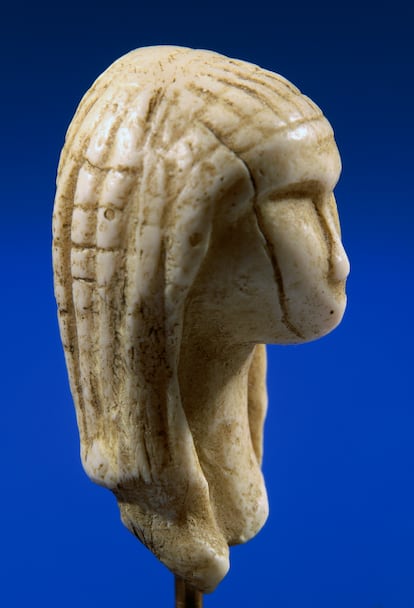
All family activities in the French department of Landes, from kayaking on the Gave d’Oloron to walking among the eternal rows of kiwis, end in equally warm establishments. In Hastingues, in an ancient fortress perched on a hill with exceptional panoramic views, is the Écrin des Gaves guest house. Its owners moved to the land of their childhood and transformed its facilities into a small hotel with unique rooms and a lot of history, since this mansion served as a summer vacation for Marga d’Andurain, an early 20th century adventuress, biographed by Cristina Morató in Prisoner in Arabia. Morató defined the house, known as Villa Le Pic, as “a house of three floors and ten rooms, with a well-kept garden and a magnificent view of the river.”
A heritage recognized by UNESCO
Although the Hundred Years’ War between France and England (14th century) and the Wars of Religion (16th century) damaged its appearance, a rich cultural heritage with intact charm has survived to the present day. Many of these churches, convents or towers, rebuilt years later, are part of the UNESCO world heritage site, since in this territory several paths converge that connect to the Camino de Santiago. Of the original abbey of Sorde, founded in the 10th century by Benedictine monks on the edge of the Gave d’Oloran, only the church survives. The Gallo-Roman ruins on which the abbey dedicated to St. John was built are the oldest scars, as its current appearance was rebuilt during the 17th and 18th centuries. The mosaics of the School of Aquitaine, the cloister or the imposing 70 meter facade next to the river are the preamble to the visit of the underground tunnels where the enigmas and gaps in their use continue to stimulate the imagination.
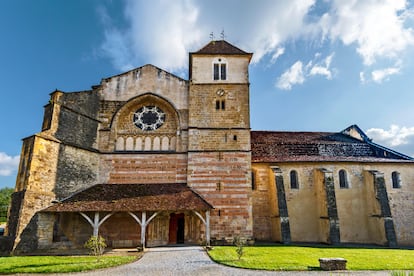
Not far away, along the Adour, the medieval city of Saint-Sever is another of the 71 items inscribed on the UNESCO list. The village was an important center of Benedictine power during the Middle Ages and its abbey is one of the major attractions of this beautiful town where a self-guided route has been designed starting in the Plaza del Sol. Like the rest of the churches, that of Saint-Sever was damaged during the territorial wars, so its current appearance mixes baroque elements, Romanesque mosaics and Gothic naves. The cloister of the beautiful 12th century Jacobean convent, the houses around Durrieu street or Palacetes street enrich a city in whose center the Crabos family promoted the duck feather industry.
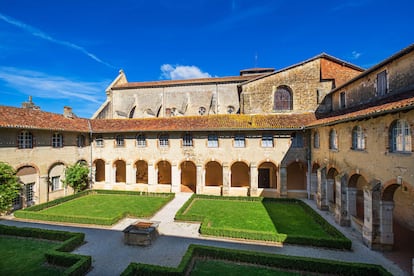
Going up the river, in Aire-sur-l’Adour, the church of Sainte Quitterie also bears witness to the same turbulent past. Although it was built by the Benedictines in the 11th century and its name appears in an 11th-century papal bull, its hilltop appearance is part of the Gothic temple built between the 12th and 14th centuries. The reddish stones recall the fire that devastated the temple during the Wars of Religion in 1569, although the largest treasure remains unchanged. Protected for centuries, it is a 4th century white marble sarcophagus which housed the body of the martyr and which has stood within this pilgrimage center for centuries.
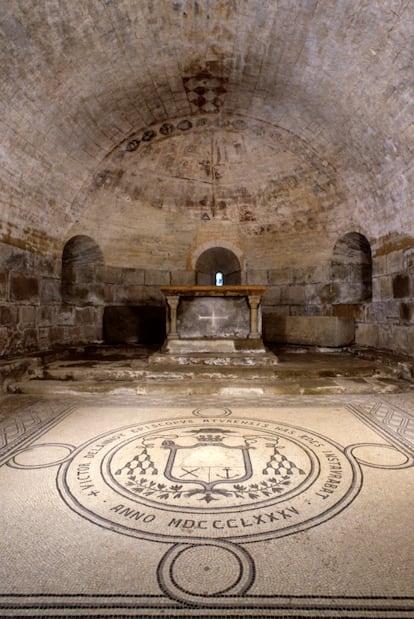
Bastia land
As you go up the river, the oaks begin to block the road to the corn fields and the pines become more and more distant. The streets continue to be thin capillaries that unite a territory of scattered bastides, those cities built during the 13th century to protect their inhabitants. Mauvezin d’Armagnac, little Hontanx, Hastingues itself or Saint-Justin, where a couple of young chefs stimulate life with Les Allées, their gastronomic project, make up the litany of these ancient fortified villages. Labastide-d’Armagnac, located around the Place Royal, is one of the most fascinating and best preserved.
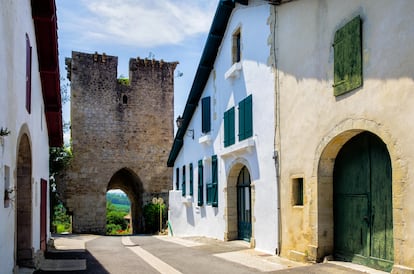
The heart of the town has a rectangular plan and its porticoes housed the local market under a succession of clay and wooden houses such as the Maison Malartic, frequented by the future King Henry IV. The defensive tower, located in the same square, was connected to the church of Notre-Dame, inside which there is a Pietà carved in wood that the inhabitants hid to protect it from looting. At the end of the square, Café Cantado contains the popular legend of a boy in the 19th century who wanted to do theater but his mother refused him. Eventually the boy ended up performing at this venue thanks to his mother’s husband. This is just one of the legends of a land that dissolves its memory over time while honoring its traditions. The greatest homage is the celebration which, during the last weekend of October, marks the beginning of the distillation of Armagnac.
In a text from 1320, the prior of Eauze and Saint Mont wrote of this characteristic liqueur that “if taken with medicine and sobriety, 40 virtues or efficacy are attributed to it”. For this reason today this brandy is considered the oldest spirit in France, even if its popularity has not reached that of cognac. In return, those seven centuries of tradition continue to be preserved in many of the cellars where 61 stills distill four types of bitter grapes that grow in the fields. Château Garreau, in Labastide-d’Armagnac, is one of those producers who began teaching the production process with two centenarians in the 1980s. In the cellar, a pioneer in guided tours, a museum has been opened which brings visitors closer to the techniques and culture surrounding a spirit distilled for three weeks.
It is estimated that in Armagnac, which extends between the Landes and the nearby department of Gers, there are around 450 producers producing brandy with high quality criteria. At Château de Ravignan, for example, just 7,500 liters are produced per year from five hectares of vineyards. The Lacroix family purchased this Loire-style mansion in 1732 and, since then, has revived the culture of brandy with detailed explanations and subsequent tasting among centuries-old crockery, tapestries, paintings and account books that reflect the life of the property in the 18th century.
A place to rest
In the inns scattered across the Landes or in curious establishments such as Lou Pignada, the hut that a carpenter built six meters high in the municipality of Roquefort, relaxation in the Landes is concentrated in the quiet spas. One of the most evocative is located in Eugénie-les-Bains, which takes its name from Eugenie de Montijo, wife of Napoleon III. It all began in the mid-19th century when, on their way to Biarritz to rest, the royal entourage stopped in this small settlement. In 1861, the inhabitants asked the Empress to sponsor the place whose greatest symbol is today the hotel Les Prés d’Eugénie.
That history is preserved in a splendid complex of 15 hectares and several buildings, from the manor house to the ancient convent, which houses 45 rooms furnished with antique furniture, fireplaces and 18th-century paintings. An accurate style, among other things, printed by Christine Guérard, whose husband, Michel Guérard, opened his restaurant in the establishment in 1974. Guérard remained at the helm of the three Michelin star restaurant for more than four decades, during which he elevated its dietetic gastronomy to a universal category.
There is another Michelin-starred restaurant in the hotel, L’Orangerie, which completes a gastronomic line-up that attracts a legion of diners despite Eugénie-les-Bains being located far from any major urban center. But this isolation in which thermal waters are provided in a traditional Landes house is, at the same time, the greatest charm of the oasis of blue cedars, cypresses and weeping willows dotted with fountains. An innovative healthy philosophy that, promoted by one of the fathers of new kitchenhe stopped time in this universe of peace that evokes a world that has already disappeared.
